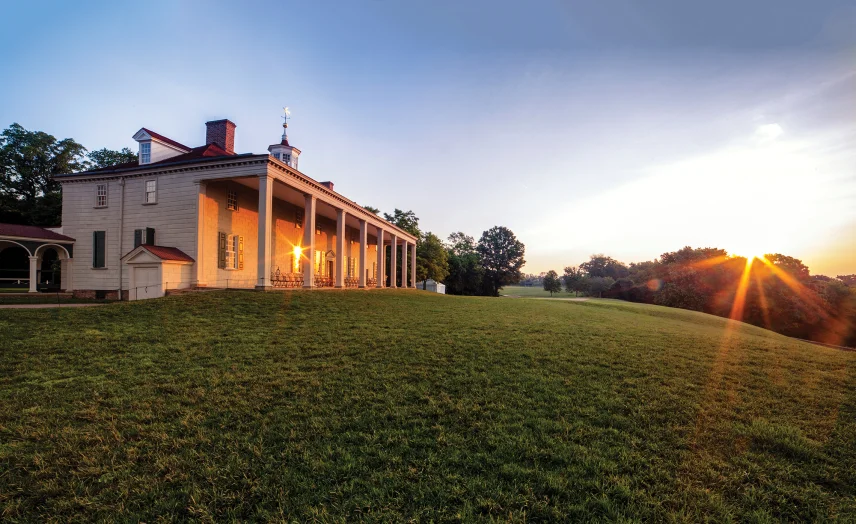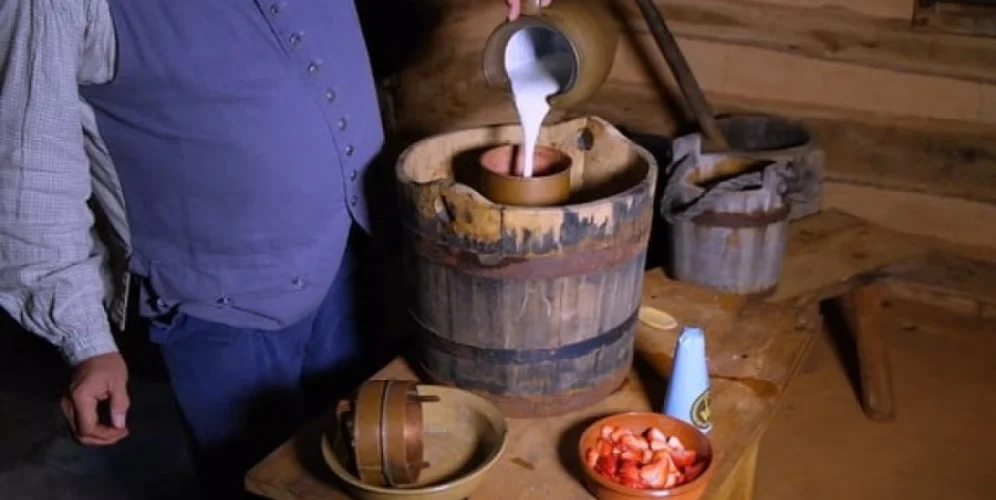The Kitchen has once again become the spot for making a favorite treat of the Washingtons: ice cream. On the floor in front of the table, a wooden bucket holds a tin ice cream freezer packed in ice and salt. Cream, sugar, and flavorings (here, fresh strawberries) were added to the freezer, which was then turned by hand using the handle built into its lid. Sugar nippers, a mortar and pestle, a sifter, and an earthenware pitcher are displayed nearby to teach our guests about the ingredients (and the hard work) required to make this special indulgence.
George Washington’s accounts include several purchases of utensils for preparing and serving ice cream, including a “Cream Machine for Ice” in May 1784 (the first reference to the dessert at Mount Vernon), as well as ice cream molds and an ice cream spoon (purchased in Philadelphia in June 1796). During Washington’s presidency, Martha is known to have served ice cream at her weekly Friday levees. Attesting to the dessert’s popularity at Mount Vernon, the inventory taken after George Washington’s death lists two pewter ice cream pots, valued at $3.00, and another eight of tin, valued at $1.00, stored for the winter on the second floor of the Kitchen.
The strawberries in the yellow earthenware bowl might be some of the first fruits born of the “few seed of the Scarlet Alpine Strawberry” that George Washington received as a retirement gift from Winthrop Sargent of Cincinnati (then part of the Northwest Territory) on June 16, 1798. Sargent boasted that this variety “produces most excellent Fruit during all the Summer and Autumn and which have not been till lately known to me in America – for twenty Years I was unsuccessfully essaying to procure it.” Mount Vernon’s Horticulture team has reestablished a “berry bed” in the Fruit Garden and Nursery, installing 600 strawberry plants, 30 red currants, and 30 red gooseberries.
Other summer produce on view in the Kitchen and Larder includes cucumbers, cabbage, melons artichokes, figs and peaches. Some of these fruits and vegetables went fresh to the table, but a portion of the season’s yield would be pickled for winter, a process we will see with the fall scenarios.



